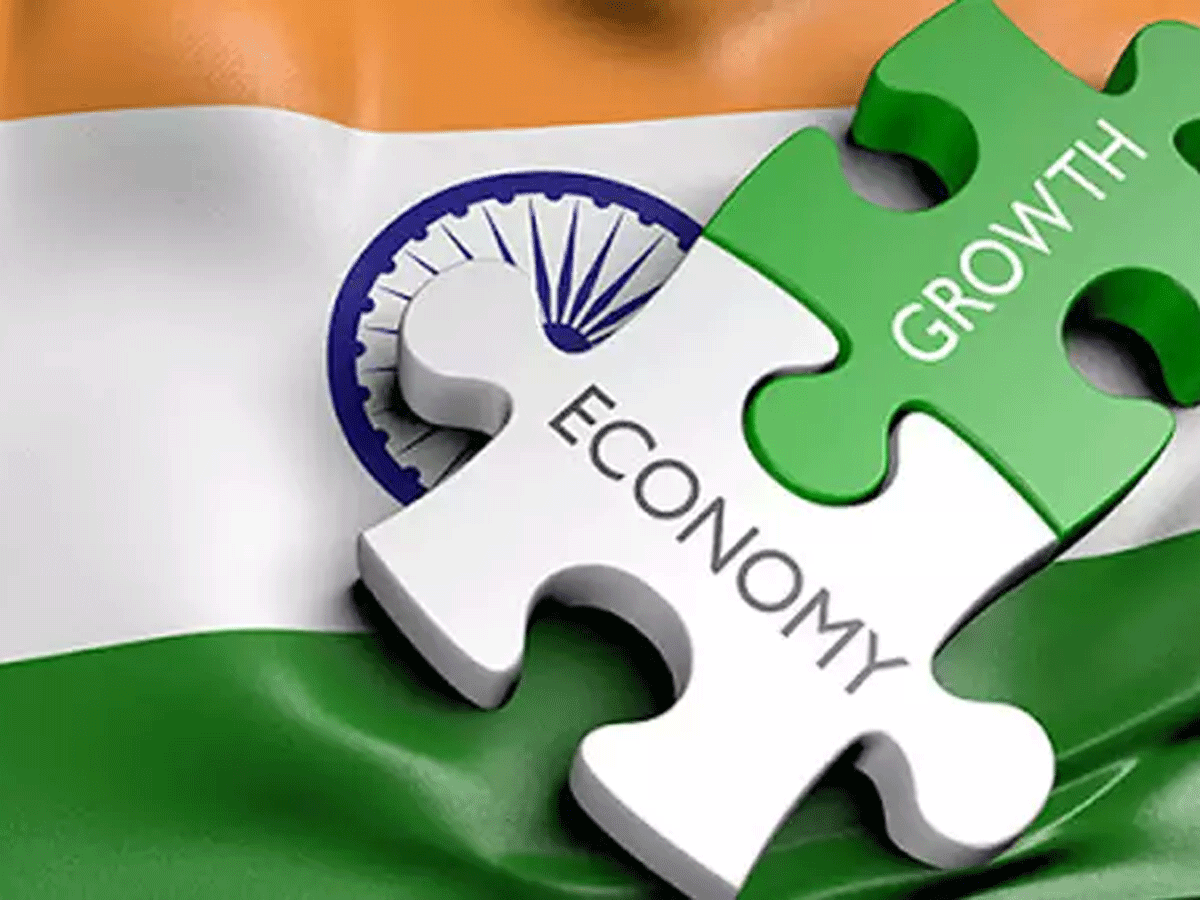
Indian economy better placed than US
- August 12, 2022
- 0
Inflation at the moment may be above the upper limit of the inflation targeting framework but there is room for optimism about growth prospects for the Indian economy in 2022-23.
The inflation rate needs to fall. But analysts seem to be having second thoughts about the degree of monetary tightening that needs to happen. That is the cause for optimism about growth.
Reserve Bank of India (RBI) Deputy Governor Dr. Michael Patra made three important points. First, he indicated that we might expect inflation to fall back into the tolerance band of 2-6 per cent by the fourth quarter of 2022-23, Second, Dr Patra seemed hopeful that “monetary policy actions in India will be more moderate than elsewhere in the world”.
Third, Dr. Patra indicated that inflation may exceed 6 per cent for three successive quarters, which would be a breach of the MPC’s mandate. However, if India’s gross domestic product (GDP) can grow at 6-7 per cent in this year and the next. “the RBI will have fulfilled its mandate of prioritising price stability while being mindful of growth.” read together, the second and third points could be interpreted to mean that interest rate hikes here after would not be so drastic as to cause GDP growth to fall below 6 per cent. This approach may result in a breach in the accountability mandate of the MPC. So be it, Dr Patra seemed to suggest.
These are “extraordinary times”. Nobody can disagree. Having just emerged from successive waves of the pandemic, the world economy is facing new supply constraints. India’s economy needs to be protected from supply constraints.
The spoiler could be the actions of the US Federal Reserve. The fed has of late taken a “we will do whatever it takes” approach to fighting inflation. Market analyst feel the Fed could hike interest rates by a further 120-150 basis points in the months ahead. If the RBI were to match that, the repo rate could rise to as much as 6.4 per cent. That would render a soft landing difficult for the Indian economy.
The best outcome would be that the Fed does not hike the policy rate as much as feared. The other possibility is that the RBI does not have to match the Fed’s rate hikes. The price to be paid is a further flight of portfolio funds and a depreciation in the rupee. We can live with such a depreciation. Despite the fall in the exchange rate of the rupee with respect to the dollar, the 40- currency real effective exchange of the rupee has remained virtually unchanged in May 2022 compared to May 2021.
When it comes to a soft landing, India is better placed than the US and many other European economies. Even at May’s inflation rate of 7 per cent, inflation in India is 2.5 percentage points above the average for the previous five years. In the US, the difference is about 5.5 percentage points. Monetary tightening required is greater in the US.
मुद्रास्फीति फ़िलहाल भले ही मुद्रास्फीति को लक्षित करने के लिए बनी व्यवस्था की ऊपरी सीमा से अधिक हो लेकिन यह आशा बरकरार है कि भारतीय अर्थव्यवस्था 2022-23 में अच्छी वृद्धि हासिल करेगी।
मुद्रास्फीति की दरों में कमी आना जरूरी है. लेकिन विश्लेषणों की बात करे तो जरूरी मौद्रिक सख्ती को लेकर पुनर्विचार होता दिख रहा है. वृद्धि को लेकर आशावाद भी इसी वजह से है।
भारतीय रिजर्व बैंक (आरबीआई) के डिप्टी गवर्नर डॉ. माइकल पात्र ने तीन बातें कहीं। पहला, उन्होंने संकेत दिया कि हम यह उम्मीद कर सकते है कि 2022-23 की चौथी तिमाही तक मुद्रास्फीति 2-6 फीसदी के तय दायरे में लौट जाएगी. दूसरा, डॉ. पात्र को आशा है कि भारत में मौद्रिक नीति संबंधी कदम दुनिया के अन्य हिस्सों की तुलना में कुछ सहज होंगे।
तीसरा, डॉ. पात्र का संकेत है की मुद्रास्फीति लगातार तीन तिमाहियों में 6 फीसदी का स्तर पार कर सकती है जो एमपीसी के दायरे का उल्लंघन होगा. बहरहाल, भारत का सकल घरेलु उत्पाद (जीडीपी) इस वर्ष तथा अगले वर्ष 6-7 फीसदी की दर से बढ़ सकता है, ऐसे में आरबीआई मूल्य स्थिरता को प्राथमिकता देने का अपना लक्ष्य पूरा करेगा. दूसरे और तीसरे बिंदु को एक साथ देखें तो इसका अर्थ यह हो सकता है कि ब्याज दरों में होने वाला इजाफा इतना अधिक नहीं होगा कि जीडीपी की वृद्धि दर 6 फीसदी से नीचे आए. शायद डॉ. पात्र का सुझाव है कि इससे एमपीसी की जवाबदेही में कमी आ सकती है तो आने दिया जाए।
यह असाधारण समय है इस बात से कोई इंकार नहीं कर सकता. हम अभी एक के बाद एक महामारी की लहरों से उबरे हैं. दुनिया की अर्थव्यवस्था अभी भी आपूर्ति बाधाओं से जूझ रही है। भारत की अर्थव्यवस्था को आपूर्ति बाधाओं से बचाने की आवश्यकता है।
अमेरिकी फ़ेडरल रिज़र्व के कदम जरूर गड़बड़ी की वजह बन सकते है. फेड ने मुद्रास्फीति से निपटने के लिए कुछ भी करने का रुख थोड़ी देर से अपनाया. बाजार विश्लेषकों को लगता है कि आने वाले महीनो में फेड ब्याज दरों में 120 से 150 आधार अंको का इजाफा कर सकता है. यदि आरबीआई को इसकी बराबरी करनी हो तो रीपो दर को 6.4 प्रतिशत तक बढ़ाया जा सकता है. ऐसी में अर्थव्यवस्था के लिए हालात मुश्किल हो सकते है।
सबसे अच्छा नतीजा यही होगा कि फेड नीतिगत दरों में उतना इजाफा न करे जितनी आशंका है. दूसरी संभावना यह है कि आरबीआई फेड के इजाफे की बराबरी न करे. इसकी कीमत पोर्टफोलियो फंड गवांने और रूपये के अवमूल्यन के रूप में चुकानी पड़ सकती है. डॉलर के मुकाबले रूपये में गिरावट के बावजूद मई 2021 की तुलना में मई 2022 में 40 मुद्राओं के वास्तविक प्रभावी एक्सचेंज में रूपये का मूल्य अपरिवर्तित रहा।
जहां तक नियंत्रण की बात है तो भारत अमेरिका और अन्य यूरोपीय देशों की तुलना में बेहतर स्थिति में है. मई की 7 फीसदी मुद्रास्फीति के बावजूद देश में मुद्रास्फीति बीते पांच साल की तुलना में 2.5 फीसदी अधिक है. अमेरिका में यह अंतर 5.5 फीसदी से अधिक है. अमेरिका में मौद्रिक सख्ती की आवश्यकता अधिक है।






























































